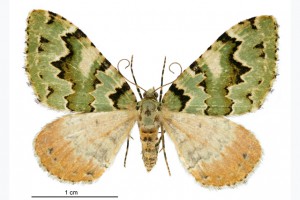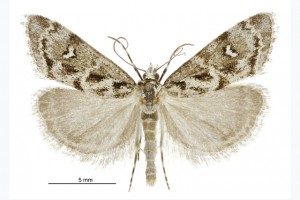Larger moths of New Zealand
In this section
Bibliographic citation
Publication date: 31 March 2011. Updated: March 2012
Hoare, R.J.B., Rhode, B.E., Emmerson, A.W. 2011 (and updates): Larger moths of New Zealand: Image gallery and online guide. https://www.landcareresearch.co.nz/discover-our-research/biodiversity/plants-invertebrates-fungi-and-bacteria/invertebrate-systematics/moths-and-butterflies/larger-moths-of-new-zealand
Identification
![[Cosmodes elegans] (female). Noctuidae: Amphipyrinae. Regular migrant to New Zealand. Image: Birgit E. Rhode [Cosmodes elegans] (female). Noctuidae: Amphipyrinae. Regular migrant to New Zealand. Image: Birgit E. Rhode](/assets/Tools-And-Resources/Identification/Moths/Noctuidae/cosmodes_elegans_f__ResizedImageWzQwNSwyNDhd.jpg)
[Cosmodes elegans] (female). Noctuidae: Amphipyrinae. Regular migrant to New Zealand. Image: Birgit E. Rhode
Moth identification in New Zealand is hampered by the lack of coverage in available field-guides. The only comprehensive, fully illustrated account is that of G.V. Hudson in his ‘Butterflies and Moths of New Zealand’ and its Supplement (Hudson 1928, 1939). These two volumes are now rare and expensive and very out of date (many names have changed, and new species have been described). Hudson’s beautiful coloured illustrations vary in their scientific accuracy, and sometimes it is hard to recognise a moth from his painting alone. Field-guides published since Hudson’s day (e.g., Crowe 2002), though often useful, depict only a rather small proportion of the moth fauna, and omit even some common and conspicuous species.
In fact, it would be highly impractical to produce a modern equivalent to Hudson’s work. A major problem is that we are still a long way from understanding the true diversity of the moth fauna of New Zealand, because detailed up-to-date taxonomic studies of most groups have not been undertaken. In effect, this means that we do not know for certain what species some of the older scientific names refer to, or whether certain groups of variable and similar-looking populations of moths from different localities represent one species or several. Many new, unnamed species await formal description, a time-consuming process. The result is that even ‘experts’ are unable confidently to put a name to many New Zealand moths! The problem is particularly acute with the smaller moths, the so-called ‘Microlepidoptera’. Identifying these is a specialised task even in countries (e.g., the U.K.) with well understood faunas, and more so in New Zealand, where many of the smaller moths have never been critically studied by modern methods. This website therefore deals only with the better (but still incompletely) known ‘macro-moths’ (i.e., the moth families listed below). In general, this means all the more conspicuous, broad-winged moths most likely to attract attention. For these ‘macro-moths’ this website will be a near-comprehensive guide. However, we have not included undescribed species at this stage. In practice, since most unnamed species are rare and local (many are restricted to the Alpine zone of the South Island), they are unlikely to be encountered by most people.
A hard-copy Field Guide to Larger Moths of New Zealand is in preparation by Alan Emmerson, Robert Hoare and Birgit Rhode; it is intended that this will be fully comprehensive in its coverage of the families included on the website. It will also show a greater range of variation for the very variable species (e.g. Cleora scriptaria, Declana floccosa) than can be shown here. This web-guide is a precursor and online companion to the planned Field Guide.
Images
The images in this online Guide are of pinned moths with their forewings and hindwings spread in the standard position for museum specimens.
All images have been taken and edited by Birgit Rhode from specimens selected by Alan Emmerson and Robert Hoare. All specimens are in the Synoptic Lepidoptera Collection in NZAC, unless otherwise indicated.
The catalogue of New Zealand Lepidoptera published by Dugdale (1988: Fauna of New Zealand 14) provides a more detailed inventory of the fauna, including nomenclature (scientific names and associated bibliographic information), primary type repositories, additional notes, and a key to Lepidoptera families. The inventory of names has been updated by Hoare (2010: New Zealand Inventory of Biodiversity vol. 2, ed. D. Gordon, pp. 457-465), but further changes are likely in view of current revisionary work on Noctuidae. These will be incorporated into this website as they occur.
Acknowledgments
The authors acknowledge the financial assistance of the Terrestrial and Freshwater Biodiversity Information System (TFBIS) Programme towards the preparation of this image gallery (Project 225, April 2009 - March 2012).The TFBIS Programme is funded by the Government to help to achieve the goals of the New Zealand Biodiversity Strategy, and is administered by the Department of Conservation. Co-funding by Landcare Research - Manaaki Whenua MSI* programme "Defining New Zealand's Land Biota" (2009 - present) for preparation and ongoing maintenance of this project, is also acknowledged.
Thanks are extended to Marie-Claude Larivière (MWLR) for assistance with project planning, project management, and website development, and to Karen Scott (MWLR) for her time and great talent as a web-designer.
The authors of this guide are very grateful to the following people, who assisted with loans of material for photography: John Early and Rosemary Gilbert (AMNZ, Auckland Museum, Auckland), Brian Patrick (BPNZ, private collection), Simon Pollard and Kate McCaughan (CMNZ, Canterbury Museum, Christchurch), Eric Edwards (EENZ, private collection), John Bain (FRNZ, Forest Research Institute Collection, Scion, Rotorua), John Marris (LUNZ, Entomology Research Museum, Lincoln University, Lincoln), Ricardo Palma and Phil Sirvid (MONZ, Museum of New Zealand, Wellington), and Otto Hyink and Cody Fraser (OMNZ, Otago Museum, Dunedin).



